UPSC Daily Current Affairs: 2nd May 2025 | Current Affairs & Hindu Analysis: Daily, Weekly & Monthly PDF Download
GS2/Polity
Prevention of Money Laundering Act (PMLA)
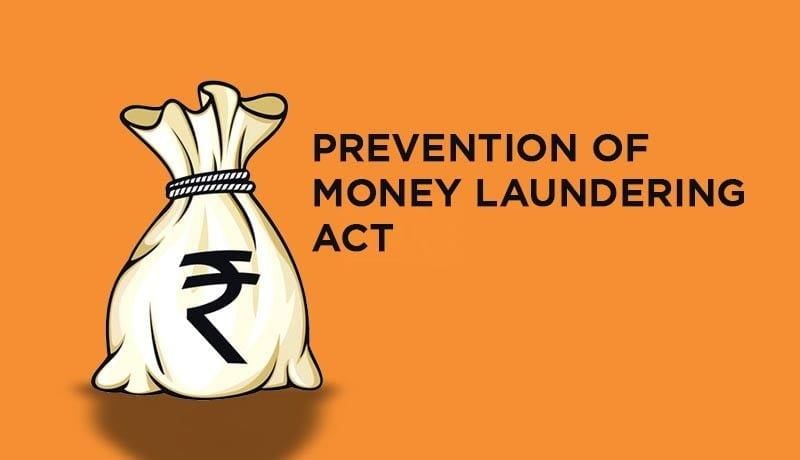 Why in News?
Why in News?
The Enforcement Directorate (ED) has significantly ramped up its actions under the Prevention of Money Laundering Act (PMLA) since 2014, marking a robust institutional response to economic offences in India.
- The PMLA was enacted in January 2003 to combat money laundering and confiscate proceeds of crime.
- Section 3 of the Act defines money laundering as any attempt to present criminal proceeds as untainted assets.
- Major amendments to the PMLA occurred in 2009 and 2012, broadening its scope and enforcement capabilities.
- As of 2024-25, the ED has initiated 775 new investigations and filed 333 prosecution complaints under the PMLA.
Additional Details
- Enforcement Directorate (ED): The ED is the primary enforcement agency under the PMLA, authorized to investigate, attach properties, and file prosecution complaints.
- Client Verification: The Act requires banks, financial institutions, and intermediaries to maintain records and verify client identities.
- Key Institutions: The Act involves several key institutions including the Adjudicating Authority (for attachment confirmation), Appellate Tribunal, and Special Courts (designated sessions courts for PMLA trials).
- The PMLA also facilitates international cooperation through treaties and Memoranda of Understanding (MoUs) with foreign governments.
Looking ahead, a significant focus for 2025 will be on cases under the Foreign Exchange Management Act (FEMA), which are a key enforcement priority. Additionally, under the Fugitive Economic Offenders Act, 2018, applications have been filed against 24 individuals declared as fugitive economic offenders, with assets worth over ₹900 crore confiscated to date.
GS2/Polity
Private Member’s Bill (PMB)
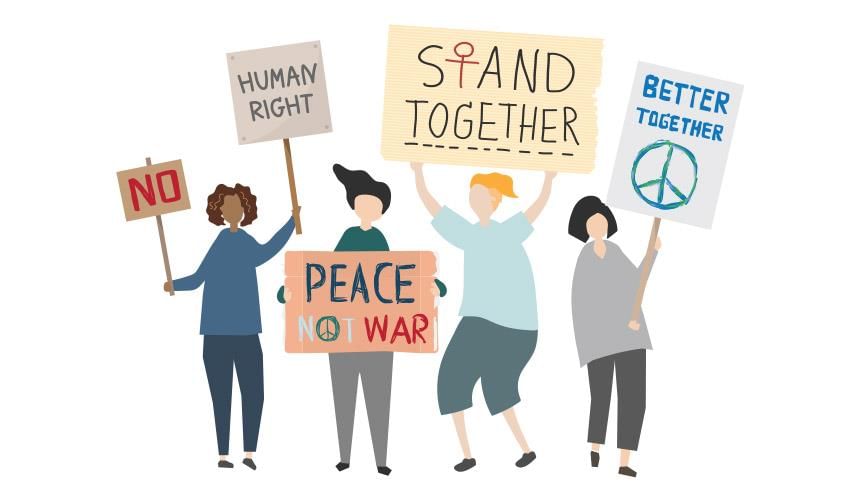 Why in News?
Why in News?
The Vice President of India has recently highlighted the significance of Private Member's Bills (PMBs), describing them as “forward-looking” and a “gold mine” for legislative progress.
- A PMB is a legislative proposal introduced by any Member of Parliament (MP) who is not a Minister.
- The responsibility for drafting a PMB lies entirely with the MP concerned, independent of any Ministry.
- A notice period of one month is required for introducing a PMB in Parliament.
- PMBs often reflect the ideological stance and public interest concerns of MPs, particularly from the Opposition.
Time Allocation for PMBs in Parliament
- Lok Sabha: The last two-and-a-half hours of business on every Friday are set aside for the introduction and discussion of PMBs.
- Rajya Sabha: PMBs are discussed every alternate Friday for two-and-a-half hours.
Historical Record and Trends
- Since Independence, only 14 PMBs have been passed and received Presidential assent, with the last one becoming law in 1970.
- During the 17th Lok Sabha (2019–2024), 729 PMBs were introduced in the Lok Sabha and 705 in the Rajya Sabha; however, only 2 PMBs were discussed in Lok Sabha and 14 in Rajya Sabha.
- As of the 2024 Budget Session in the 18th Lok Sabha, only 20 MPs have introduced PMBs, but none were discussed due to disruptions and prioritization of other business.
This highlights the challenges faced by PMBs in gaining traction and the need for a more conducive environment for legislative discussions.
GS3/Science and Technology
ITER Tokamak Reactor
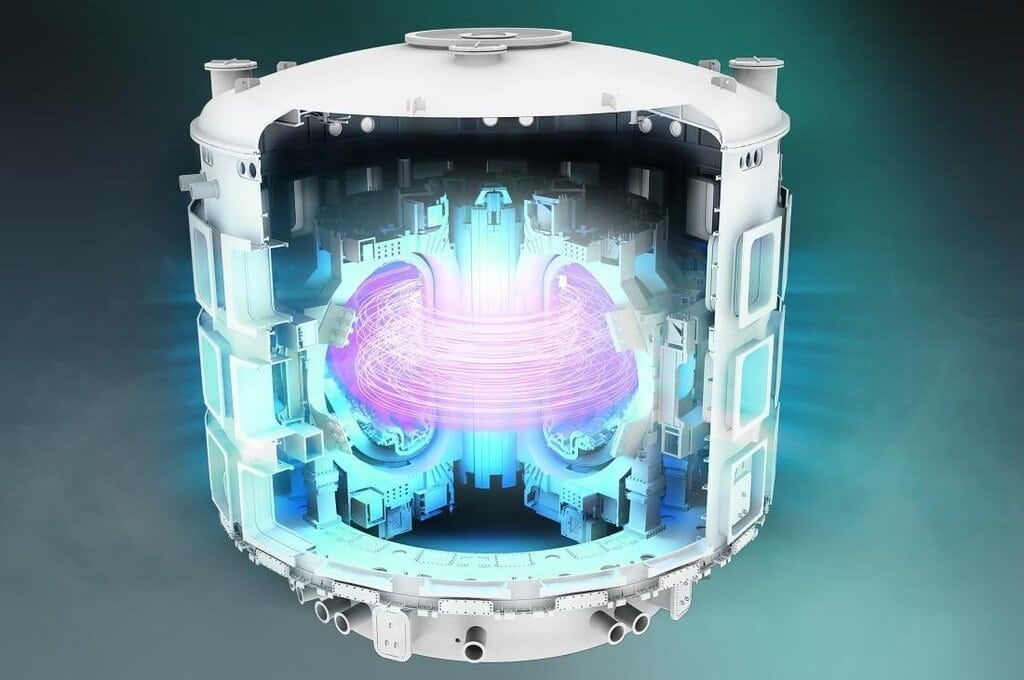 Why in News?
Why in News?
Scientists involved in the ITER project, the world’s largest nuclear fusion initiative, have successfully completed the main magnet system, with India playing a crucial role in constructing essential infrastructure.
- ITER aims to demonstrate nuclear fusion as a safe, carbon-free, and sustainable energy source.
- The project involves collaboration among 35 nations, including the EU, US, China, Japan, South Korea, and Russia.
- Fusion reactions use deuterium and tritium (hydrogen isotopes) at temperatures exceeding 150 million °C, which is ten times hotter than the sun's core.
- ITER's goal is to achieve a fusion gain (Q) of 10, producing 500 megawatts of fusion power from just 50 megawatts of input heating power.
- The project was launched in 1985, officially founded in 2006, began construction in 2007, and is expected to commence operations in 2033.
Additional Details
- Tokamak: A doughnut-shaped magnetic fusion device designed to contain the hot plasma necessary for nuclear fusion. It employs powerful superconducting magnets to confine plasma and prevent it from contacting the reactor walls.
- India’s Role in ITER: India has been a full partner in the ITER project since 2005, contributing expertise and technology across various components, including:
- The design and manufacture of a cryostat, a 30-meter-high and 30-meter-diameter vacuum shell, made of stainless steel that houses the ITER tokamak and maintains the ultra-cold environment required for operations.
- Development of in-wall shielding to protect the reactor's components from heat generated during fusion reactions.
- Provision of cryogenic systems to cool the superconducting magnets and RF heating systems to heat the plasma to necessary fusion temperatures.
- Contributions to the development of components essential for plasma confinement within the tokamak.
- ITER-India: This project under the Institute for Plasma Research (IPR) manages key contributions, including diagnostics, power supplies, and infrastructure development. It is also working on a tritium breeding module for future fusion reactors to ensure self-sufficiency in this vital fuel.
In summary, India’s involvement in the ITER project positions it as a significant player in advancing nuclear fusion technology, which holds the promise of a sustainable energy future.
UPSC 2016 Question:
India is an important member of the 'International Thermonuclear Experimental Reactor'. If this experiment succeeds, what is the immediate advantage for India?
- (a) It can use thorium in place of uranium for power generation
- (b) It attain a global role in satellite-navigation
- (c) It can drastically improve the efficiency of its fission reactors in power generation
- (d) It can build fusion reactors for power generation*
GS2/International Relations
Indo-Pacific Maritime Domain Awareness (IPMDA)
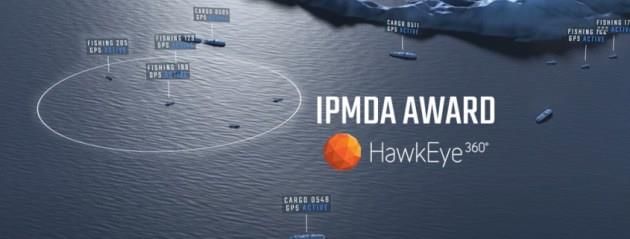 Why in News?
Why in News?
The U.S. Defence Security Cooperation Agency (DSCA) has certified a potential Foreign Military Sale (FMS) to India, highlighting the importance of the Indo-Pacific Maritime Domain Awareness (IPMDA) initiative.
- The IPMDA is a Quad-led initiative aimed at enhancing maritime surveillance in the Indo-Pacific region.
- It focuses on tracking "dark shipping" and improving transparency in critical sea lanes.
- The U.S. has approved a $131 million sale of maritime surveillance technology to India.
Additional Details
- IPMDA Initiative: Launched during the Quad Leaders’ Summit in Tokyo in May 2022, the IPMDA seeks to create a more effective maritime surveillance network across the Indo-Pacific.
- Strategic Focus Areas:The initiative targets three key sub-regions:
- Pacific Islands
- Southeast Asia
- Indian Ocean Region (IOR)
- Objectives: The primary goal is to enhance maritime domain awareness and provide actionable intelligence to partner countries in the region.
- Technology Utilization: The initiative employs advanced tools, such as commercial satellite radio frequency (RF) data, to monitor maritime activities in near real-time.
- U.S. Approval to India: The approved sale includes SeaVision software, training support, and remote analytics, all crucial for vessel tracking and coastal surveillance.
The IPMDA represents a significant effort to bolster maritime security and cooperation among countries in the Indo-Pacific, ensuring better management of exclusive economic zones (EEZs) and enhancing regional stability.
GS3/Environment
Green Hydrogen Certification Scheme of India (GHCI)
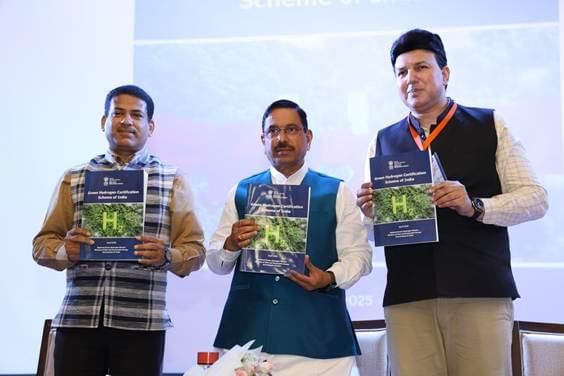 Why in News?
Why in News?
The Government of India has recently launched a green hydrogen certification scheme to enhance transparency and credibility in hydrogen production.
- The scheme was introduced by the Ministry of New and Renewable Energy (MNRE) under the National Green Hydrogen Mission.
- It aims to position India as a global leader in green hydrogen production and export.
- Producers must adhere to strict emissions standards and monitoring protocols.
Additional Details
- Certification Criteria: Hydrogen can be classified as "green" only if its non-biogenic greenhouse gas emissions are less than 2 kg CO₂ equivalent (CO₂e) per kg of hydrogen, averaged over 12 months.
- Certification Process: A comprehensive certification framework is established, requiring producers to verify that hydrogen is produced using renewable energy, with emissions not exceeding the specified threshold.
- Types of Certificates:The GHCI issues four categories of certificates:
- Concept Certificate
- Facility-Level Certificate
- Provisional Certificate
- Final Certificate
- Record Keeping: Producers must maintain comprehensive production and emissions records for a minimum of five years, following a standardized Monitoring, Reporting, and Verification (MRV) framework.
- Compliance and Penalties: Compliance is critical, with the potential for certificate withdrawal if emissions exceed limits or if the certification process is not completed on time.
- Certificates are issued in multiples of 100 kg of hydrogen, including details on emission intensity and production characteristics, with a nominal fee applicable only for the final certificate.
This certification scheme aligns with international standards such as ISO 19870:2023 to ensure global comparability and enhance investor confidence while enabling producers to access carbon credits under the Carbon Credit Trading Scheme (CCTS).
GS3/Science and Technology
Rishikesh-Karnaprayag Tunnel T-8
Why in News?
The Rishikesh-Karnaprayag Tunnel T-8 is poised to be India's longest rail transportation tunnel, stretching 14.57 km. It will surpass the current record holder, Tunnel T-50, which measures 12.77 km as part of the Udhampur-Srinagar-Baramulla Railway Link.
- T-8 will be the longest rail tunnel in India at 14.57 km.
- It is part of the 125-km Rishikesh-Karnaprayag Broad Gauge Rail Link Project in Uttarakhand.
- Over 83% of the rail alignment—approximately 104 km—consists of tunnels.
- The project is executed by Larsen & Toubro (L&T) and managed by Rail Vikas Nigam Limited (RVNL).
- The rail link will significantly reduce travel time from Rishikesh to Karnaprayag from 7 hours to 2 hours.
Additional Details
- Twin Tunnel: The T-8 consists of twin tunnels located on the Devprayag–Janasu stretch, enhancing connectivity across five districts: Dehradun, Tehri Garhwal, Pauri Garhwal, Rudraprayag, and Chamoli.
- Tunnel Boring Machines (TBMs): This project utilized TBMs for the first time in Himalayan rail projects, excavating 4 km of T-8 using 2200-tonne machines imported from Germany.
- Engineering Techniques: The New Austrian Tunnelling Method (NATM) was employed for the remaining 4.11 km of the tunnel, particularly in challenging geological conditions.
- Technological Innovations: Advanced technologies such as Tunnel Seismic Prediction (TSP), Torque Box for multidirectional boring, and Void Measurement for detecting gaps were implemented to ensure safety and precision.
This project not only marks a significant engineering achievement but also promises enhanced connectivity in the region, facilitating economic growth and development.
GS1/History & Culture
Satavahana Inscriptions Found in Telangana
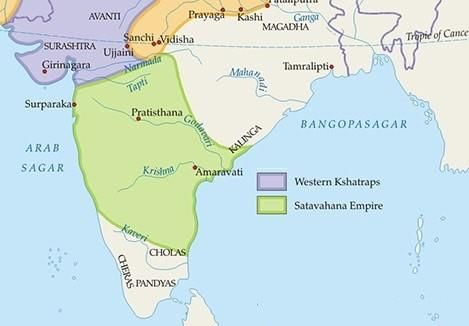 Why in News?
Why in News?
A recent survey conducted by the Archaeological Survey of India (ASI) has uncovered eleven inscriptions in the Gundaram Reserve Forest of Telangana. These findings provide significant insights into the region's ancient history, particularly during the Satavahana period.
- One inscription refers to a figure from the Haritiputra lineage, indicating a connection between the Satavahana dynasty and the Chutu dynasty.
- The site features religious symbols such as a trident and damaru, marking the earliest known religious iconography in early South Indian inscriptions.
- The inscriptions support earlier findings from Mukkutraopet and Kotilingala, confirming that Telangana was part of the Asmaka Mahajanapada.
About the Satavahana Dynasty
- Emergence: The Satavahana dynasty rose to power following the decline of the Mauryan Empire around 60 BCE, ruling over regions that include Andhra Pradesh, Maharashtra, Karnataka, and Madhya Pradesh.
- Founding King: Simuka, the dynasty's founder, reigned from 60 BC to 37 BC, and was succeeded by his brother Kanha.
Notable Rulers
- Satakarni I (70–60 BC): Conquered western Malwa from the Shungas.
- Gautamiputra Satakarni (106–130 AD): Expanded the empire and patronized both Brahmanism and Buddhism.
- Vashishtaputra Pulamayi (130–154 AD): Extended his reign to the mouth of the Krishna River.
- Yajna Sri Satakarni (165–194 AD): The last great ruler, known for expanding the empire to Kokan.
Art and Architecture
- The Amaravati School of Art thrived during this period, producing marble sculptures that depicted Buddhist narratives.
- The Satavahana dynasty promoted rock-cut architecture, including significant sites such as Chaityas and Viharas (e.g., Karle Caves and Ajanta Caves).
Economic and Administrative Contributions
- The Satavahanas enhanced trade with Romans, supported agriculture, and established a mixed revenue system.
- They introduced tax-free villages for Brahmins and Buddhist monks.
Religious and Social Structure
- The dynasty promoted Vedic sacrifices and supported the Varna system that structured society.
Decline of the Satavahana Dynasty
- The empire faced decline due to weak leadership in later years and was ultimately fragmented by feudatories and invasions from the Shakas.
Military Organization
- The Satavahanas maintained a large military force, comprising 100,000 infantry, 2,000 cavalry, and 1,000 elephants.
Consider the following statements:
- 1. The last Mauryan ruler, Brihadratha, was assassinated by his commander-in-chief, Pushyamitra Sunga.
- 2. The last Sunga king, Devabhuti, was assassinated by his Brahmana minister Vasudeva Kanva, who usurped the throne.
- 3. The last ruler of the Kanva dynasty was deposed by the Andhras.
Which of these statements is/are correct?
- Options: (a) 1 and 2 (b) Only 2 (c) Only 3 (d) 1, 2 and 3*
GS3/Economy
Vizhinjam Port
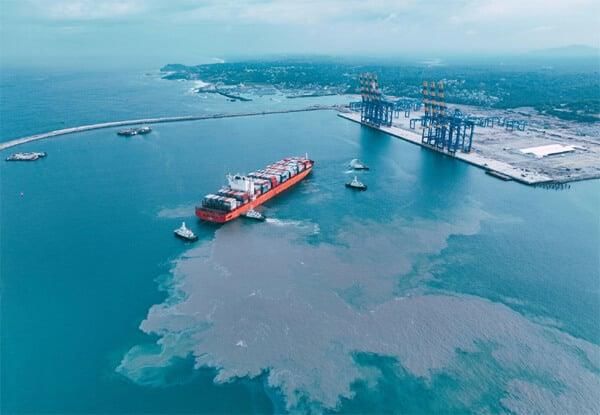 Why in News?
Why in News?
The Prime Minister of India is set to formally inaugurate the Vizhinjam International Seaport in Kerala, a significant milestone aimed at enhancing the state's presence on the global maritime stage.
- Location: Vizhinjam is in Thiruvananthapuram District, Kerala, and is India's first dedicated transshipment port.
- Investment: Built at a cost of approximately Rs 8,900 crore under a public-private partnership (PPP) model, with the Adani Group operating it.
- Advanced Features: The port boasts India's first home-built AI-powered Vessel Traffic Management System, fully automated yard cranes, and remotely operated ship-to-shore cranes.
Additional Details
- Strategic Location: Located just 10 nautical miles from a crucial international shipping route, Vizhinjam’s deep waters are ideal for large container vessels.
- Market Impact: Historically, 75% of India's transshipment traffic has been managed overseas, resulting in foreign exchange losses. Vizhinjam aims to reclaim a substantial share of this traffic.
- Logistics Hub Development: Plans are in progress to develop Vizhinjam into a multi-modal logistics hub, with enhanced connectivity via NH-66 and a new railway link to the national network.
In conclusion, the inauguration of Vizhinjam Port marks a transformative step for Kerala’s economy and its role in global shipping, promising to enhance maritime trade and reduce reliance on foreign ports.
GS2/International Relations
China’s Strategic Push — Asia Ties Amid Tariff Tensions
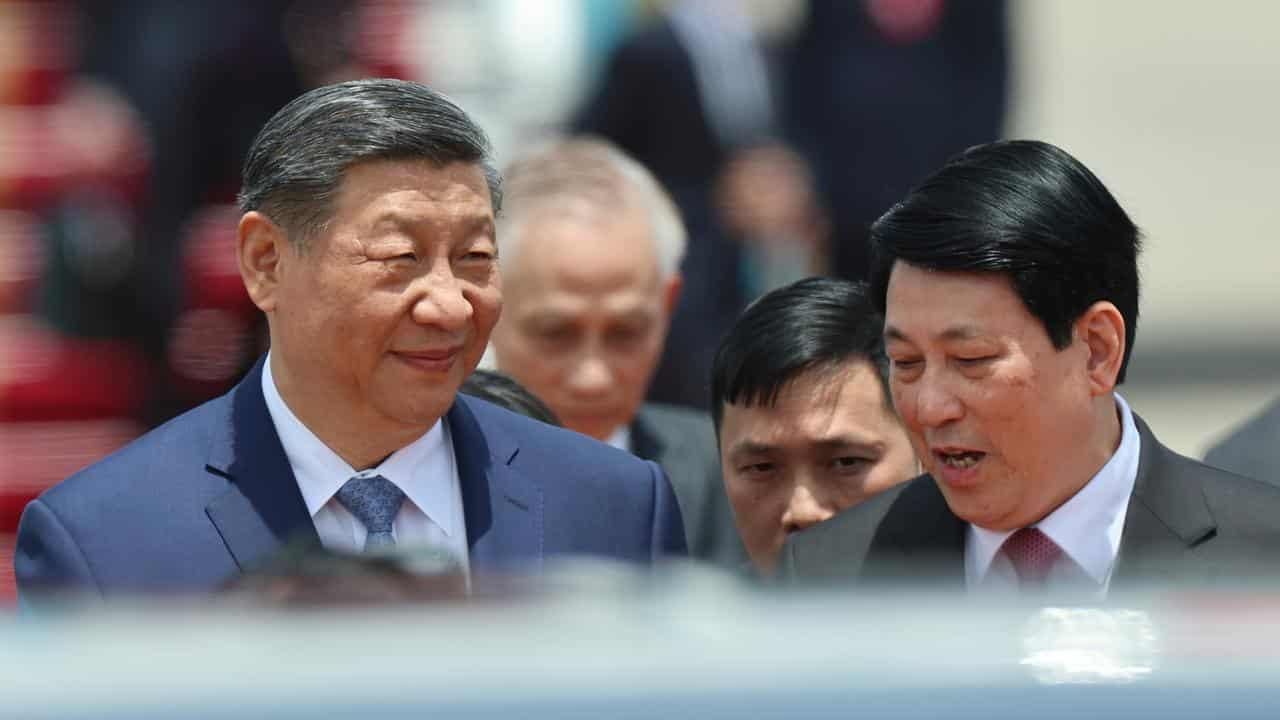 Why in News?
Why in News?
In April 2025, Chinese President Xi Jinping initiated a significant diplomatic tour across Southeast Asia, visiting Vietnam, Malaysia, and Cambodia from April 14–18. This visit aimed to reinforce China’s position as the region’s essential ally amidst escalating global economic and geopolitical tensions, particularly against the backdrop of a severe U.S.-China trade war that saw tariffs on Chinese exports soar to 145% under the Trump administration. Xi's outreach was part of a larger strategy to reestablish China's leadership narrative in the Indo-Pacific.
- Xi's tour was a strategic maneuver to strengthen ties with Southeast Asia amid U.S. economic pressures.
- China presented itself as a stable economic partner compared to rising tariffs imposed by the U.S. on Southeast Asian nations.
- The tour resulted in numerous cooperation agreements in technology, infrastructure, and agriculture.
- Xi's visit sought to showcase China's alternative development model against U.S. interventionist policies.
Additional Details
- Economic Strategy: Xi's visit yielded 45 new agreements in Vietnam and over 30 in Malaysia, focusing on sectors such as digital innovation and infrastructure. In Cambodia, commitments included the critical Funan Techo Canal project, illustrating China's commitment to economic collaboration.
- Ideological Competition: The tour underscored China's development-centric model, contrasting it with what it views as the U.S.'s rigid, interventionist approach. This message found strong resonance in Cambodia and partial support in Malaysia, highlighting China's soft power strategy.
- Strategic Timing: The timing of Xi's visit capitalized on perceived gaps in U.S. engagement with Southeast Asia, focusing on economic diplomacy rather than security alliances like AUKUS and the Quad.
- Domestic Signalling: The warm receptions Xi received bolstered his domestic political standing, reinforcing China's image as a reliable partner in the Global South amidst Western skepticism.
In conclusion, Xi Jinping's tour of Southeast Asia exemplifies China's strategic use of economic diplomacy and soft power during a time of global uncertainty. By combining tangible economic benefits with strategic messaging, China aims to solidify its presence in the Indo-Pacific, offering an alternative to U.S. influence. The success of this strategy will depend on the long-term responsiveness of Southeast Asian nations, many of which strive to maintain a balance between competing superpowers.
GS2/Governance
Understanding SECC 2011 and India's Caste Census Landscape
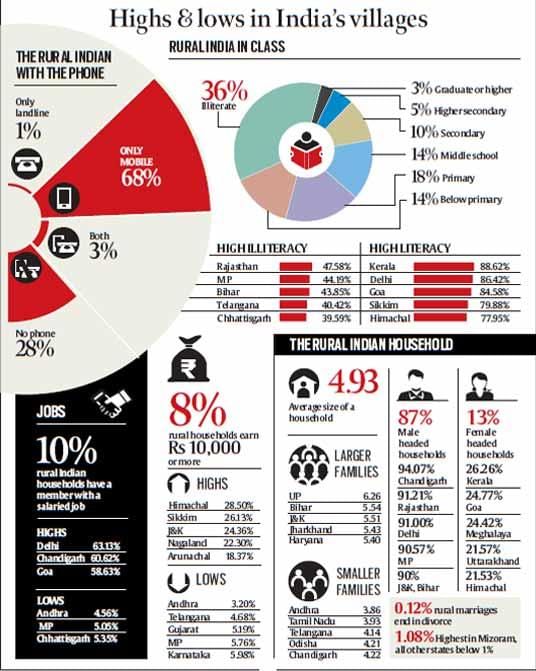 Why in News?
Why in News?
India has not released disaggregated caste data since the 1931 Census, leading to a significant gap in understanding caste-based demographics. The Socio Economic and Caste Census (SECC) 2011 aimed to address this gap, but the government did not publish specific caste-wise population data.
- Recent caste data has not been available since the 1931 Census.
- SECC 2011 collected caste data but did not release it publicly.
- The upcoming Census 2021 aims to rectify this by including comprehensive caste data.
Additional Details
- Background: The most recent publicly available caste population data is from the 1931 Census, which serves as the baseline for the upcoming Census 2021. The 1941 Census collected caste data, but it was not released due to World War II. Post-independence Censuses have only included broad classifications of Scheduled Castes (SC) and Scheduled Tribes (ST).
- SECC 2011 Overview: Launched on June 29, 2011, by the Union Ministry of Rural Development, SECC aimed to assess the socio-economic status of households across urban and rural areas. It involved a nationwide door-to-door enumeration and was conducted across 24 lakh enumeration blocks, primarily between 2011 and 2012.
- Differences Between SECC 2011 and Census 2011: The Census 2011 data is confidential and utilized solely for statistical purposes, whereas SECC 2011 data is open for governmental use to identify beneficiaries for various schemes. SECC includes additional parameters like health status and economic conditions beyond standard demographic data.
- Caste and Tribe Specific Data: Unlike the Census, which only asked for SC/ST status, SECC collected detailed caste data, allowing for the identification of specific castes and tribes, with categories defined for SC, ST, and others.
The imminent Census, delayed due to the pandemic, is expected to include comprehensive caste data, which could significantly reshape socio-economic policies in India. Accurate and transparent data on caste is vital for targeted welfare measures, inclusive governance, and evidence-based policymaking.
GS3/Science and Technology
Ukraine’s Critical Minerals
Why in News?
Recently, the U.S. and Ukraine entered into a strategic minerals agreement that grants preferential access to Ukrainian mineral projects for the U.S. and establishes a joint investment fund aimed at the reconstruction of Ukraine.
- The deal emphasizes the importance of critical minerals for defense and technology.
- Ukraine possesses a significant share of Europe’s critical mineral resources.
- Rare Earth Elements (REEs) are vital for various high-tech applications.
Additional Details
- Critical Minerals: These are essential minerals identified by the U.S. Geological Survey (USGS) that are crucial for defense, aerospace, green energy, and electronics. The USGS lists 50 minerals, including lithium, nickel, cobalt, and rare earth elements, which have no commercially viable substitutes, making their supply chains strategically important.
- Rare Earth Elements (REEs): This group consists of 17 chemically similar metals important for the production of permanent magnets used in electric vehicles (EVs), smartphones, missile systems, and wind turbines.
- Ukraine’s Mineral Wealth: Ukraine is rich in resources, having 22 out of the 34 minerals classified as critical by the European Union (EU). Major minerals include rare earth elements like lanthanum, cerium, neodymium, and yttrium, as well as lithium, manganese, and graphite, among others.
- Graphite Reserves: Ukraine's graphite reserves account for approximately 20% of global resources, making it vital for EV batteries and nuclear reactors.
- Lithium Reserves: Estimated at 500,000 metric tonnes, Ukraine has one of the largest lithium reserves in Europe, mainly located in the central, eastern, and southeastern regions.
- Titanium: Found predominantly in the northwestern and central regions, titanium is essential for aerospace and defense applications.
- China currently dominates global rare earth production, positioning Ukraine as a strategically important alternative supplier for Western economies.
This strategic minerals deal underscores the growing recognition of Ukraine's mineral resources and their significance in global supply chains, particularly in technology and defense sectors.
GS3/Economy
Sebi Warns Investors Against Opinion Trading Platforms
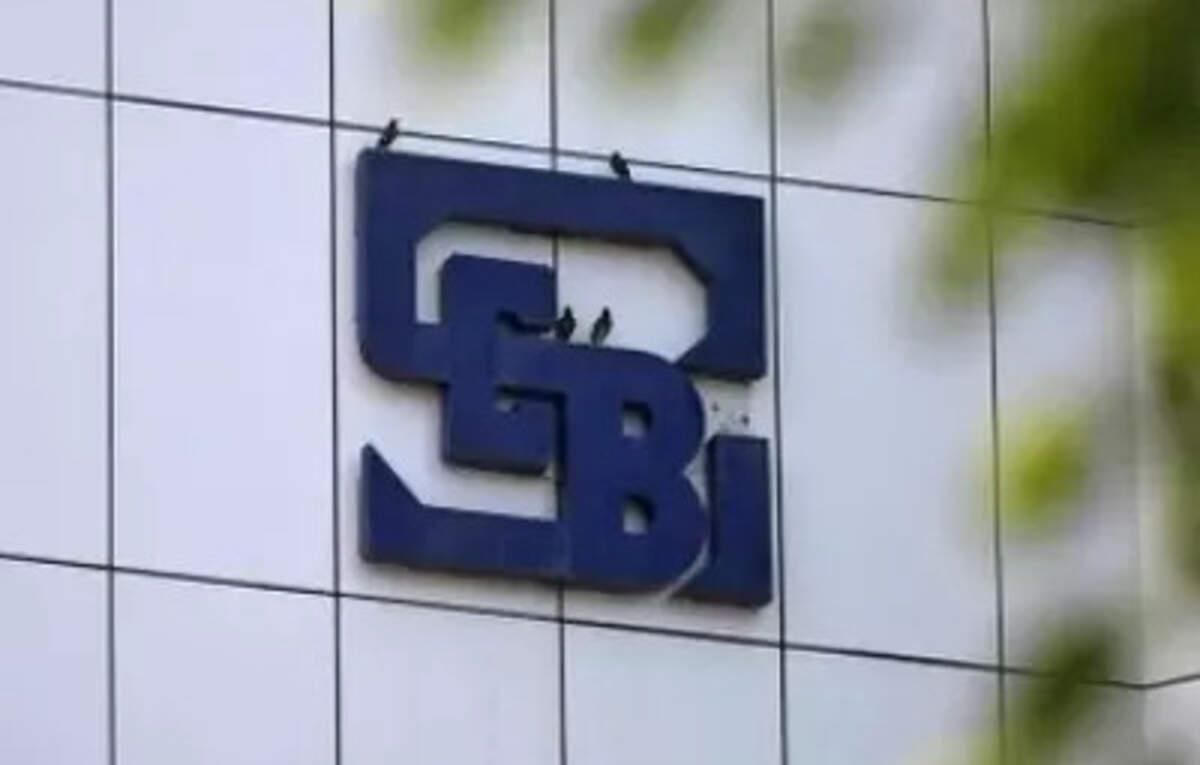 Why in News?
Why in News?
SEBI has issued a warning to investors regarding 'opinion trading platforms,' a new online betting trend in India that enables users to wager on real-life events. These platforms have previously operated with minimal oversight, but regulatory scrutiny is increasing due to their rapid expansion. The sector has attracted over ₹4,200 crore in funding from major investors, such as Sequoia Capital and Y Combinator, and has seen annual transaction volumes surpassing ₹50,000 crore, with a user base exceeding 5 crores. Revenue for the industry is projected to exceed ₹1,000 crore in FY 2024-25.
- SEBI's concerns focus on the misleading nature of opinion trading platforms.
- These platforms allow users to bet on outcomes of real-world events, mimicking investment terminology.
- Regulatory measures are being considered, but current oversight is limited.
Additional Details
- How Opinion Trading Platforms Operate: Users can place bets on yes/no propositions regarding the outcome of real events. Payouts depend on the accuracy of their predictions.
- Imitating Investment Platforms: Some platforms use financial jargon (like “profits” and “trading”) to create a false sense of legitimacy, misleading users into thinking they are making actual investments.
- Key Players in India: Notable companies include Probo (offering prediction markets on diverse topics) and MPL Opinio (focusing on cricket predictions).
- Betting on Real-Life Events: Users earn money by predicting outcomes of events such as sports matches and elections. Correct predictions yield winnings, while incorrect predictions result in losses.
- Outside SEBI’s Regulatory Scope: SEBI clarified that these platforms do not involve trading in recognized securities, placing them outside its jurisdiction.
- Unrecognized and Illegal Trading: If any bets qualify as securities, they are illegal due to the lack of authorization as stock exchanges, and no investor protection applies.
- Risk of Regulatory Action: SEBI has warned that these platforms may face legal consequences for violations and has directed stock exchanges to monitor infractions.
- Global Regulatory Landscape: Countries like the US and UK have regulatory frameworks for these platforms, with examples like Kalshi operating under CFTC oversight.
- India’s Regulatory Vacuum: The IT Ministry is considering amendments to regulate online gaming, which could encompass platforms like Probo, but enforceability remains a challenge.
In summary, SEBI's warnings highlight the risks associated with opinion trading platforms, underscoring the need for investor awareness and regulatory clarity in this evolving landscape.
|
38 videos|5288 docs|1117 tests
|
FAQs on UPSC Daily Current Affairs: 2nd May 2025 - Current Affairs & Hindu Analysis: Daily, Weekly & Monthly
| 1. What is the Prevention of Money Laundering Act (PMLA) and its significance in India? |  |
| 2. What is a Private Member’s Bill (PMB) and how does it function in the Indian legislative system? |  |
| 3. What is the ITER Tokamak Reactor and what role does it play in nuclear fusion research? |  |
| 4. What is the Indo-Pacific Maritime Domain Awareness (IPMDA) initiative and its relevance to regional security? |  |
| 5. What is the Green Hydrogen Certification Scheme of India (GHCI) and its objectives? |  |





















